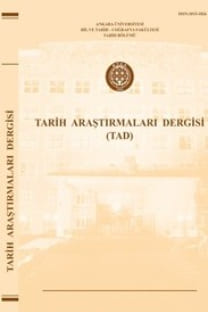Hinduizm’in Ak Hunlar üzerindeki yansımaları
Orta Asya’nın engin bozkırlarından Avrupa’ya kadar ilerleyen Türkler, varlıklarını sürdürdükleri coğrafyalarda sosyal ve siyasi amaçlar uğrunda kendilerine yakın gördükleri dinleri kabul ettiler. Türkler, her ne kadar sıklıkla din değiştiren milletler arasında yer alsa da onların bu yeni dinleri Kök Tengri inancı içinde harmanlanarak hayat şekillerini biçimlendirmiştir. Türkler, ilahi dinler olarak kabul edilen Hristiyanlık, Yahudilik ve İslamiyet’i kabul etmelerinin yanı sıra Buddhizm ve Maniheizm gibi felsefi inançlar da onların dini hayatında önemli rol oynamıştır. Ayrıca birçok ilim adamının Türklerin benimsediği dinler arasında saymadığı Hinduizm, özellikle MS IV. ve VI. yüzyıllarda Hindistan’ın kuzeyinde yaşayan Ak Hun hükümdarlarının sempati duyduğu itikatlardan biri olmuştur. Bu çalışmada bir dönem Hindistan’ın kuzeyinde varlıklarını sürdüren Büyük Hun Devletinin siyasi kalıntılarından olan Ak Hunların Hinduizm’e olan ilgileri üzerinde durulacaktır
Anahtar Kelimeler:
Din, Hinduizm, Ak Hunların dinleri, Toraman, Mihirakula
The Reflections of Hinduism on the White Huns
the religions which felt close to themselves for the sake of the social and political objectives in the geography they survived. Although the Turks were among the apostate nations, their new religion has shaped the way of life by blending in the faith of Kök-Tengri. As well as the Turks accepted Christianity, Judaism and Islam as divine religions, philosophical beliefs such as Buddhism and Manichaeism also played an important role in their lives of religion. In addition, Hinduism which isn’t accepted among the religions of the Turks by many scientists, has been one of the beliefs which White Hun rulers, living in the north of India especially in A.D. IV and VI.th centuries have sympathy. In this work, it will be focused on the interest in Hinduism of White Huns, who are the political remnants of the Great Huns who once exist in the North of India
Keywords:
Religion, Hinduism, Religions of White Huns, Toraman, Mihirakula,
___
- Biswas, A., The Political History of the Hunas in India, Munshiram Manoharlal Publishers, New Delhi 1973.
- Compareti, M., “Trace of Buddhist Art in Sogdiana”, Sino-Platonic Papers, Sayı 181, USA 2008.
- Copra, P.N. –Puri, B.N.- Das, M.N-Pradhan, A.C., A Comprehensive History of Ancient India, Sterling Publishers, New Delhi 2005.
- Çubukçu, İ.A., “Kültürümüzde Din” Ankara Üniversitesi İlahiyat Fakültesi Dergisi, C. 30, Sayı “, Ankara 1988
- Donieger, W., The Hindus an Alternative History, Penguin Press,Oxford 2010.
- Enoki, K., “On The Nationality of The Ephthalites”, Memories of the Research Department of the Toyo Bunko, XVIII, 1959.
- Enoki, K., “The Origin of The White Hun sor Hephthalites”, East and West 3, Bellinghom/Washington 1955.
- Fleet, J.F., Corpus Inscriptionum Indicarum, Superintendent of Government Printing, Vol. III, Calcutta 1888.
- Harmatta, J., “Annexation of the Hephthalite Vassal Kingdoms by The Western Turks”, History of Humanity of Central Asia, C. IV, UNESCO Publishing, Paris 1996.
- Kaya, K., Hinduizm, Dost Kitabevi, Ankara 2001.
- Kurbanov, A., The Hephthalites: Archaeological and Historical Analysis, PHD Thesis, Berlin 2010.
- Litvinsky, B.A., “ The Hephthalite Empire”, History of Civilization of Central Asia, Vol.3, UNESCO Publishing, Paris 1996.
- Marshall, J., A Guide to Taxila, Superintendent Government Printing, Calcutta 1918.
- Minorsky, V., “Khurāsān at the Time of Arab Conquest”, Iran and Islamic Memory of the Late, Edinburg University Press, Edinburg 1971.
- Nair, P.T., “The Peacock Cult in Asia” Asian Folklor Studies, Vol.33, No.2, 1974.
- Pfisterer, M., Hunnen in Indien, Verlag der Österreichischen Akademie der Wissenschaften, Wien 2013.
- Rācatarangini, Çev. Beal, S., Book I, Motilal Banarsidass Publishers, New Delhi 2009.
- Thakur, U., The Hunas in India, Vidyavilas Press, Varanasi 1967.
- Vondrovec, K., Coinage of The Iranian Huns and Their Successor from Bactria to Gandhara, Verlag der Österreichischen Akademie der Wissenschaften, Vol. I, Wien 2014.
- ISSN: 1015-1826
- Yayın Aralığı: Yılda 2 Sayı
- Başlangıç: 1963
- Yayıncı: Levent KAYAPINAR
Sayıdaki Diğer Makaleler
Türkiye’de çok partili düzene geçişte (1945-1950) Serbest Fırka deneyiminin izleri
Kudüs Yolcusu A. Koptev'in İstanbul Hatıraları (1887)
Pisidia Bölgesi şehir sikkeleri üzerindeki Hermes tasvirleri
Hinduizm’in Ak Hunlar üzerindeki yansımaları
Marsilya Suikasti (Yugoslavya Kralı Aleksander'in Öldürülmesi) ve Türkiye'deki Yankıları-9 Ekim 1934
Tuna Vilayeti Gazetesi ve içeriğine dair bazı bilgiler (Mart 1865-Mart 1868)
Türk hariciye raporlarına göre İspanya İç Savaşı (1936-1939)
Teos Antik Kenti ve Dionysos Sanatçılar Birliği
Kuzey Kıbrıs Türk Cumhuriyeti’nin ilânı ve buna yönelik tepkilerin Türk kamuoyundaki yankıları
Erdebil Tarikatı ve İlhanlılar: tasavvuf ve siyaset ilişkisinde yeni dönem
